Understanding the fundamentals of electricity and electronics starts with grasping the concept of a circuit. In this article, we will delve deep into what a circuit is, how it works, the different types of electric circuits, and more. Whether you’re a student, hobbyist, or just curious about the world of electronics, this guide will provide you with a solid foundation.
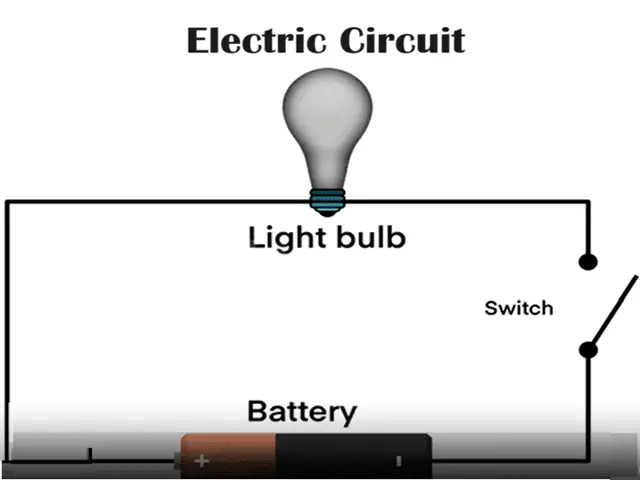
Basic Definition
A circuit, in the context of electrical and electronics engineering, is a closed path through which electric current flows. This path can be as simple as a single wire connected to a battery and a light bulb or as complex as the integrated circuits found in modern computers.
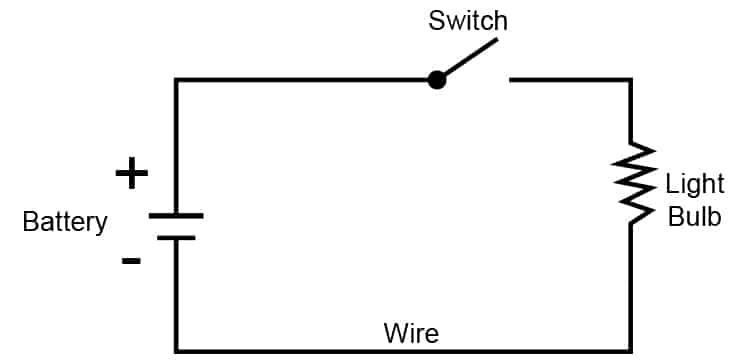
The essential components include a power source (like a battery), conductive path (such as wires), and a load (which could be a light bulb, resistor, or any device that uses electricity).
Key Components of a Circuit
Following are the Key Components:
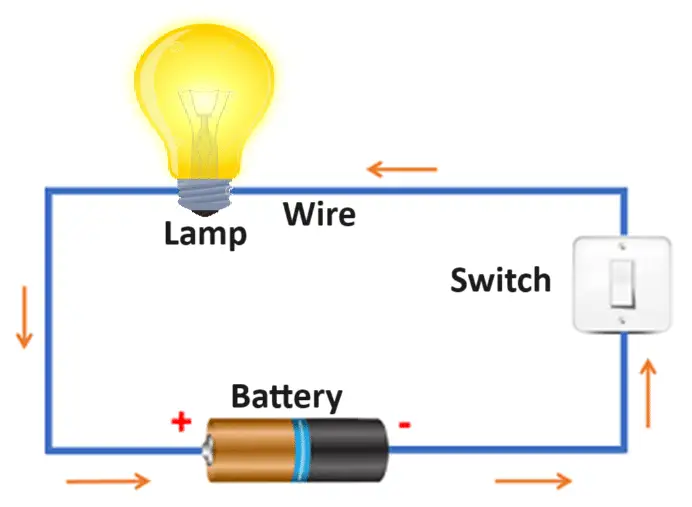
Power Source
Provides the necessary energy for the current to flow. Examples include batteries, solar cells, and power supplies.
Conductive Path
Wires or traces on a circuit board that connect different components and allow current to travel.
Load
Any device or component that consumes electrical energy, like light bulbs, resistors, capacitors, and motors.
Switch (Optional)
A device that can open or close the circuit, controlling the flow of electricity.
How Does a Circuit Work?
For a circuit to function, it must be closed, meaning there are no breaks or gaps in the path. When it is closed, the power source pushes electrons through the conductive path.
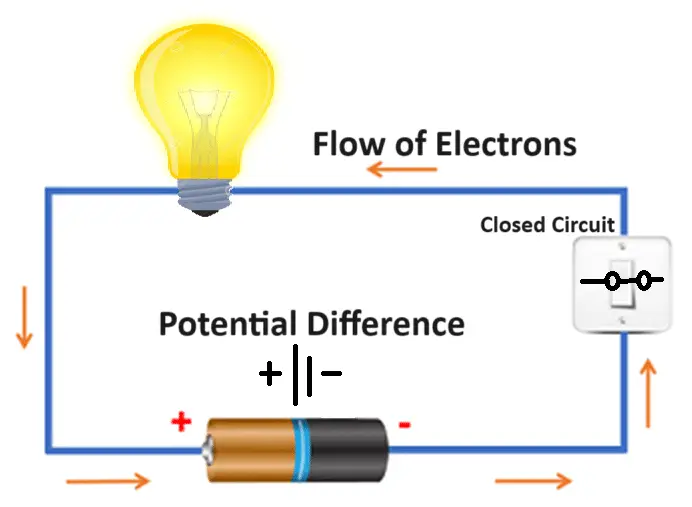
This movement of electrons is what we call electric current. The current then flows through the load, allowing it to perform its intended function, such as lighting up a bulb or powering a motor.
The Role of Voltage and Current
- Voltage (V): The potential difference between two points in a circuit. It is the driving force that pushes the current through the circuit.
- Current (I): The flow of electric charge through the circuit, measured in amperes (A).
Ohm’s Law, which states that V = I * R (where R is resistance), describes the relationship between voltage, current, and resistance in a circuit. This fundamental law helps us understand how different components in a circuit interact.
Different Types of Electric Circuits
Electric circuits come in various forms, each serving different purposes and having unique characteristics. Here are the main types of electric circuits:
-
Series Circuits
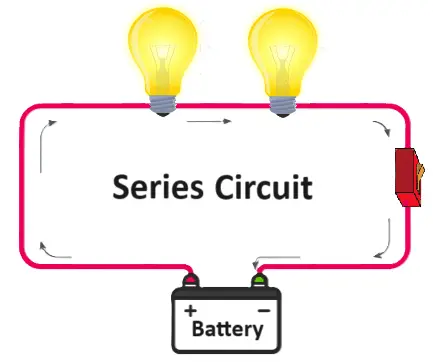
Here, components are connected end-to-end in a single path for the current to flow. The current is the same through all components, but the voltage across each component can vary.
Characteristics:
- If one component fails, the entire circuit is interrupted.
- Voltage is divided among components.
- Common in simple applications like string lights.
-
Parallel Circuits
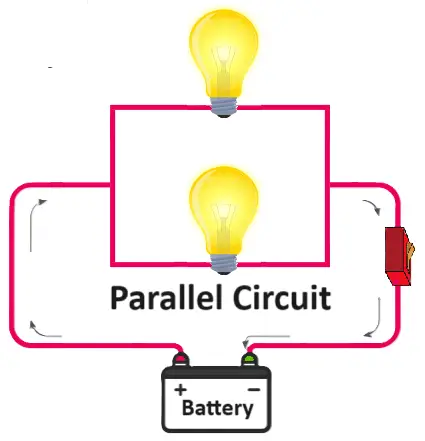
Here, components are connected across common points or junctions, creating multiple paths for the current to flow.
Characteristics:
- Each component receives the same voltage.
- If one component fails, the others can still operate.
- Common in household wiring systems.
-
Series-Parallel Circuits
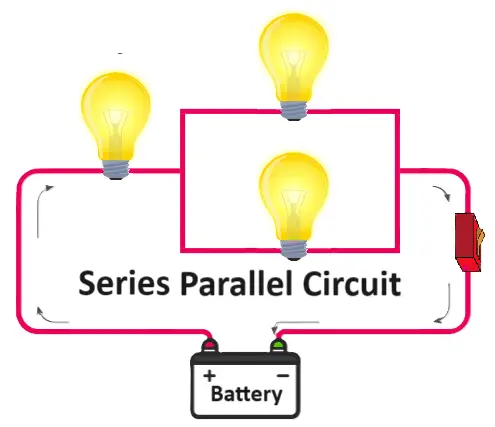
This type combines elements of both series and parallel circuits. Some components are connected in series, while others are connected in parallel.
Characteristics:
- Offers a balance of the properties of series and parallel circuits.
- Used in complex electronic devices to optimize performance and reliability.
Electric Circuit Examples
Understanding electric circuits can be enhanced by looking at practical examples. Here are a few common ones:
Example 1: Flashlight
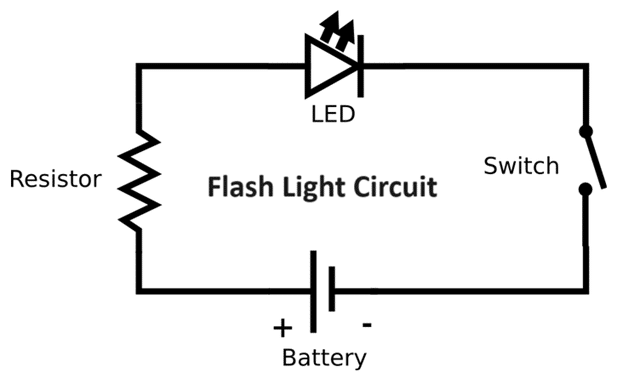
A flashlight is a simple circuit consisting of a battery (power source), a switch, and a light bulb (load). When the switch is turned on, the circuit is closed, allowing current to flow from the battery to the bulb, lighting it up.
Example 2: Home Lighting System
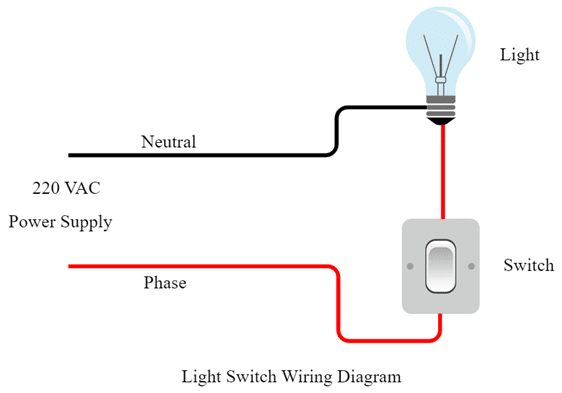
Home lighting systems typically use parallel circuits. Each light fixture is connected across the same two points of the power supply. This allows each light to operate independently; if one bulb burns out, the others remain lit.
Example 3: Computer Motherboard
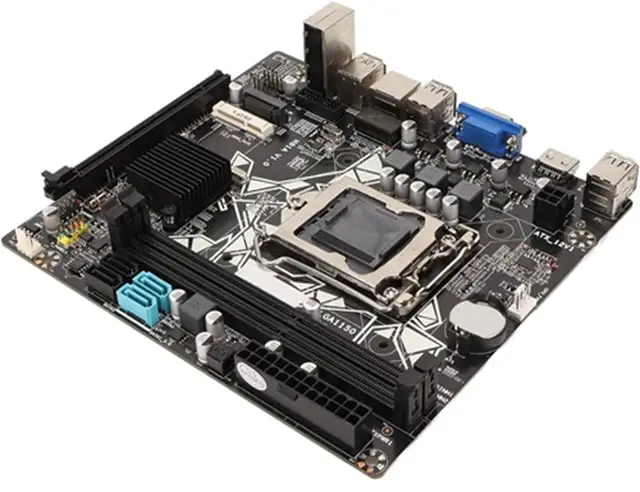
A computer motherboard is a complex circuit with numerous components connected in series, parallel, and series-parallel configurations. It includes microprocessors, memory modules, and various input/output devices, all working together to perform computing tasks.
How to Explain a Simple Circuit to Kids
Explaining a simple circuit to kids can be both fun and educational. Here’s a way to make it understandable:
Using a Simple Light Bulb Circuit
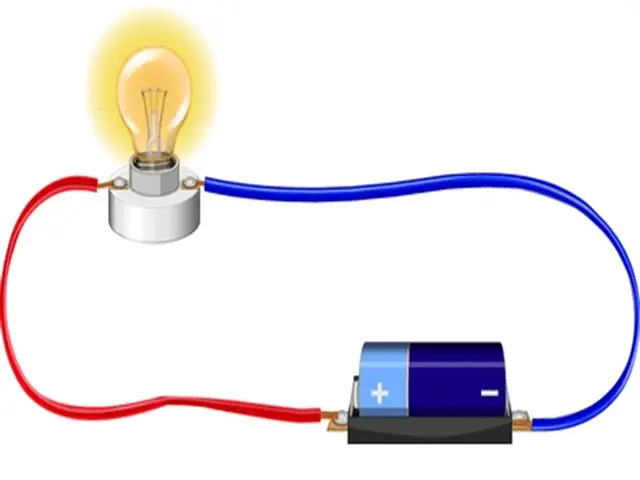
- Materials Needed: A battery, a small light bulb, and two pieces of wire.
- Step-by-Step Explanation:
- Battery: Explain that the battery is like a power plant that stores energy.
- Wires: These are like roads that carry the energy from the battery to the light bulb.
- Light Bulb: This is the device that uses the energy to produce light.
- Connecting: Show how connecting one wire from the battery’s positive end to the bulb and another from the bulb to the battery’s negative end completes the circuit.
- Light Up: When connected, the bulb lights up, demonstrating a simple circuit.
Visual and Interactive Learning
- Use diagrams to show the flow of electricity.
- Allow kids to build their own simple circuits using safe, low-voltage components.
- Explain the concept of a switch by showing how breaking the circuit turns the light off.
How to Make a Simple Circuit
Building a simple circuit is a great hands-on way to learn about electricity. Here’s a step-by-step guide:
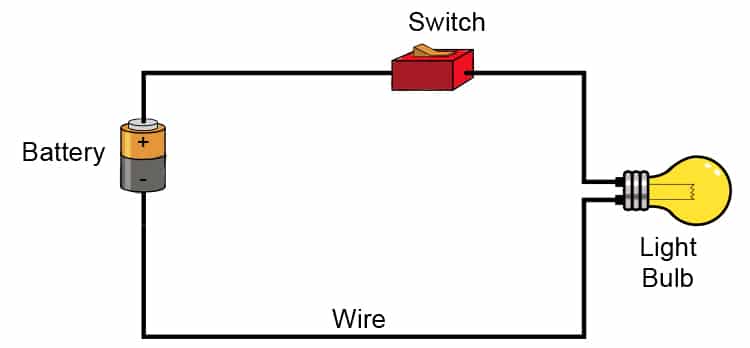
Materials Needed
- A 9-volt battery
- A small light bulb or LED
- Two pieces of insulated wire
- Electrical tape
- A switch (optional)
Step-by-Step Instructions
- Strip the Wires: Use a wire stripper to remove about 1 inch of insulation from both ends of each wire.
- Connect the Battery: Attach one end of the first wire to the positive terminal of the battery using electrical tape.
- Attach the Light Bulb/LED: Connect the other end of the first wire to the positive terminal of the light bulb or LED.
- Complete the Circuit: Attach one end of the second wire to the negative terminal of the light bulb or LED.
- Final Connection: Connect the other end of the second wire to the negative terminal of the battery.
TestingÂ
- Once everything is connected, the light bulb or LED should light up.
- If using a switch, insert it between one of the wires to control the flow of electricity.
What Does a Battery Do in a Circuit?
A battery is a crucial component in many circuits, serving as the power source. It converts chemical energy into electrical energy, providing the voltage needed to push current through the circuit.
How a Battery Works – A Short Guide
- Chemical Reaction: Inside the battery, a chemical reaction occurs, creating a potential difference between the positive and negative terminals.
- Electrons Flow: This potential difference causes electrons to flow from the negative terminal through the circuit to the positive terminal.
- Consistent Voltage: Batteries provide a steady voltage, ensuring that the connected load operates smoothly.
What is Short Circuit?
A short circuit occurs when there is a low-resistance connection between two points , allowing excessive current to flow. This can cause overheating and potential damage.
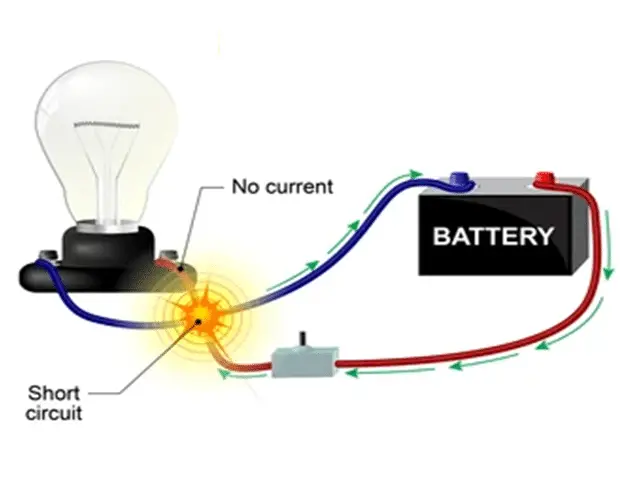
- Dangerous and can lead to fires or equipment damage.
- Usually caused by faulty wiring or damaged insulation.
What is Open Circuit?
An open circuit has a break in the path, preventing current from flowing. This can be due to a switch being open or a component failing.
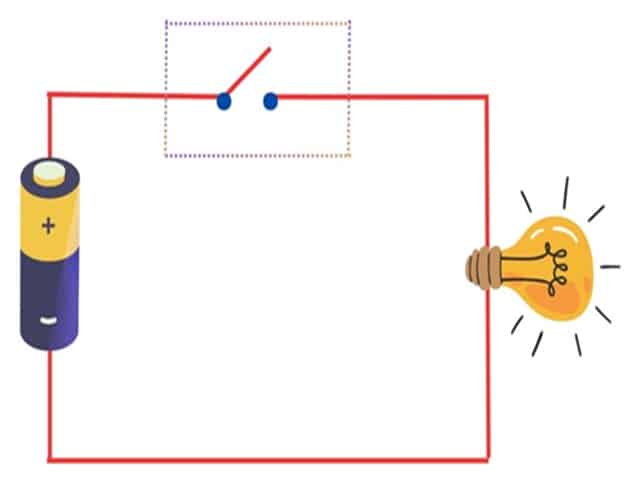
- No current flows, so the circuit does not operate.
- Used intentionally in switches to control devices.
Read Also: Integrated Circuit – Various Types, Construction, Application and Advantage Bridge Rectifier Circuit – Working, Types, Characteristics and Applications

j23pg9
zvm0n8
[…] prestigieux Shanghai Masters, étape incontournable du circuit professionnel de snooker, s’apprête à accueillir une nouvelle fois des joueurs prometteurs grâce à […]
x6ocd8
o9tl6d
6cp47s
gy20le
Thanks for another informative web site. Where else could I get that kind of info written in such a perfect way? I have a project that I’m just now working on, and I have been on the look out for such information.
p8fpxb
акриловая пленка для мебели [url=https://samokleyushchayasya-plenka-1.ru]акриловая пленка для мебели[/url] .
дизайнерская мебель купить в спб [url=www.dizajnerskaya-mebel-1.ru]дизайнерская мебель купить в спб[/url] .
5qlz08
You have mentioned very interesting points! ps nice web site.
c52xkc
замена кондиционера цена [url=https://kondicioner-obninsk-1.ru/]замена кондиционера цена[/url] .
тканевый натяжной потолок [url=https://natyazhnye-potolki-lipeck-1.ru]тканевый натяжной потолок[/url] .
I have been surfing online more than three hours today, yet I never found any interesting article like yours.
It is pretty worth enough for me. In my view, if all webmasters and bloggers made good content as you did, the web will be much more useful than ever before.
5e7iq7
You really make it appear really easy with your presentation however I to find this matter to be actually something which I believe I might never understand. It sort of feels too complex and very wide for me. I am taking a look ahead on your subsequent submit, I’ll attempt to get the hold of it!
gldo7p
Throughout this awesome design of things you get a B+ with regard to hard work. Where you actually lost me personally ended up being in the facts. As it is said, details make or break the argument.. And that couldn’t be more true in this article. Having said that, let me inform you just what did deliver the results. Your article (parts of it) is definitely really powerful which is probably the reason why I am taking the effort in order to opine. I do not make it a regular habit of doing that. Secondly, despite the fact that I can notice a leaps in logic you make, I am not really confident of just how you seem to connect your details which inturn make your final result. For the moment I shall subscribe to your issue but hope in the near future you link your dots better.
r0lywy
Oh my goodness! an incredible article dude. Thank you However I am experiencing problem with ur rss . Don’t know why Unable to subscribe to it. Is there anybody getting an identical rss downside? Anybody who knows kindly respond. Thnkx
Some genuinely wondrous work on behalf of the owner of this site, dead great subject material.
dubyji
I’m not that much of a internet reader to be honest but your blogs really nice, keep it up! I’ll go ahead and bookmark your website to come back in the future.
I’d like to thank you for the efforts you have put in writing this blog.I’m hoping to check out the same high-grade content from you later on as well. In truth, your creative writing abilities has motivated me to get my very own website now
bpbor8
You made some good points there. I looked on the internet for the issue and found most people will go along with with your site.
xc8zsg
tvq5xp
I’ve been surfing online greater than 3 hours as of late, yet I never found any attention-grabbing article like yours. It is beautiful value enough for me. Personally, if all webmasters and bloggers made excellent content material as you did, the web will likely be much more useful than ever before.
d88jco
wh81b5
Very clean web site, regards for this post.
Thank you for every other informative website. Where else could I am getting that kind of information written in such a perfect manner? I have a project that I am just now operating on, and I have been at the look out for such information.
Cabinet IQ Austin
2419 S Bell Blvd, Cedar Park,
TX 78613, United Ⴝtates
+12543183528
Moderninteriors
Howdy! I’m at work surfing around your blog from my new apple iphone! Just wanted to say I love reading your blog and look forward to all your posts! Keep up the great work!
9hvcis
I was very pleased to find this web-site.I wanted to thanks for your time for this wonderful read!! I definitely enjoying every little bit of it and I have you bookmarked to check out new stuff you blog post.
Great summary
Hi there! I just wanted to ask if you ever have any trouble with hackers? My last blog (wordpress) was hacked and I ended up losing a few months of hard work due to no back up. Do you have any solutions to prevent hackers?
Hi my family member! I wish to say that this article is amazing, nice written and come with approximately all vital infos. I would like to peer more posts like this .
Helpful overview
Great write-up, I am regular visitor of one¦s site, maintain up the excellent operate, and It is going to be a regular visitor for a lengthy time.
My partner and I stumbled over here from a different web address and thought I might check things out. I like what I see so i am just following you. Look forward to exploring your web page again.
Great write-up, I am regular visitor of one¦s site, maintain up the excellent operate, and It is going to be a regular visitor for a long time.
There are some interesting points in time on this article however I don’t know if I see all of them middle to heart. There is some validity but I will take maintain opinion till I look into it further. Good article , thanks and we would like more! Added to FeedBurner as properly
Together with every little thing which seems to be developing inside this specific subject material, many of your opinions tend to be fairly radical. On the other hand, I appologize, but I can not subscribe to your whole plan, all be it refreshing none the less. It appears to everybody that your remarks are not completely rationalized and in simple fact you are yourself not really entirely convinced of the assertion. In any event I did appreciate examining it.
What i do not realize is actually how you are not actually much more well-liked than you might be right now. You’re very intelligent. You realize thus significantly relating to this subject, produced me personally consider it from numerous varied angles. Its like women and men aren’t fascinated unless it’s one thing to do with Lady gaga! Your own stuffs excellent. Always maintain it up!
I do enjoy the way you have framed this problem plus it really does present us some fodder for consideration. On the other hand, from just what I have seen, I simply just hope when other commentary pile on that individuals stay on issue and don’t embark on a soap box of some other news of the day. All the same, thank you for this excellent piece and even though I can not really agree with the idea in totality, I respect your viewpoint.
You’re bringing fireworks with posts like this — impressive!
Such a spirited, exciting perspective — loved it!
just a test
Absolutely bursting with personality — amazing job!
This is exactly the type of information I needed today.
I found exactly what I needed on this website. Go check it out — it might help you too!